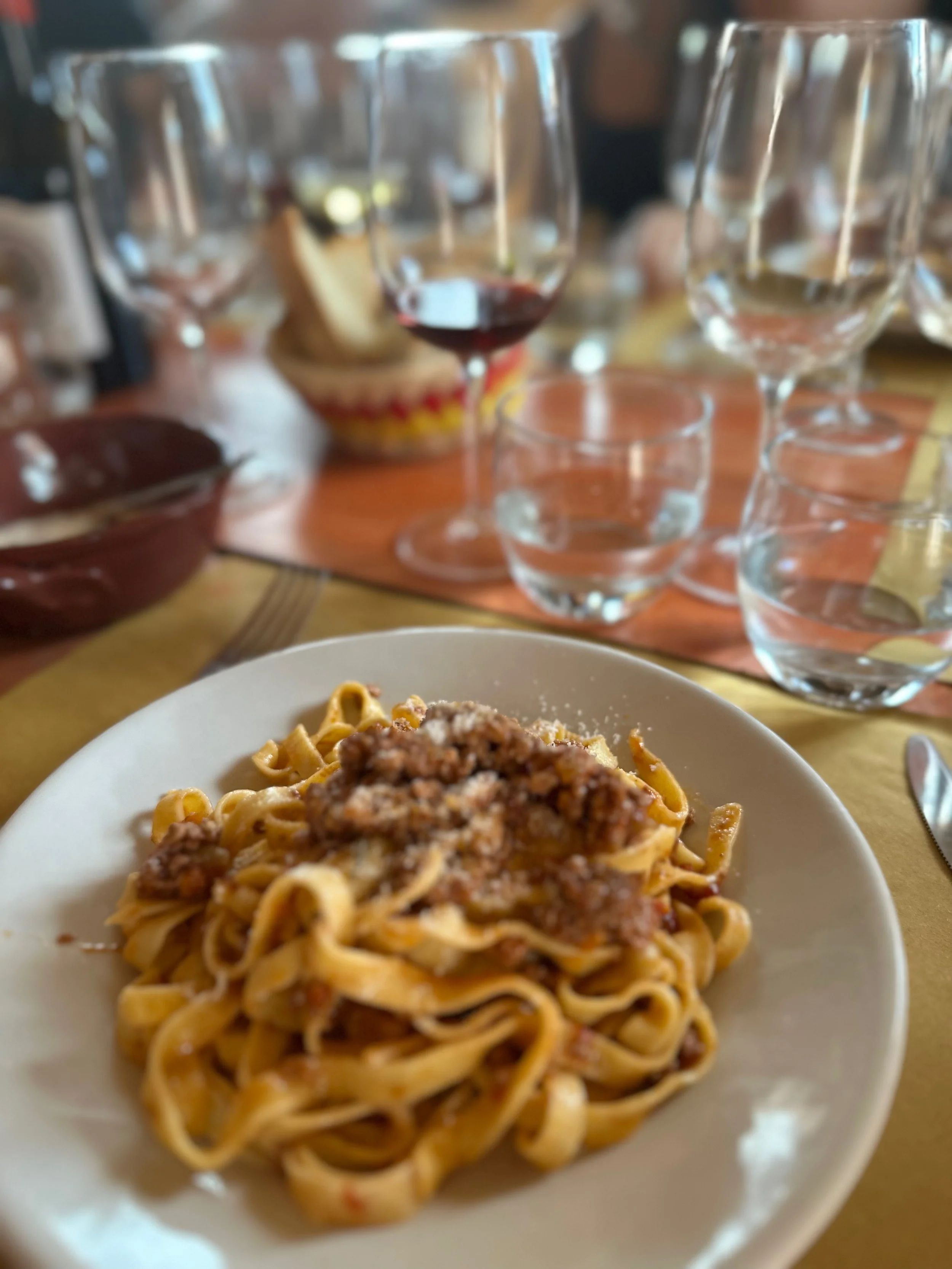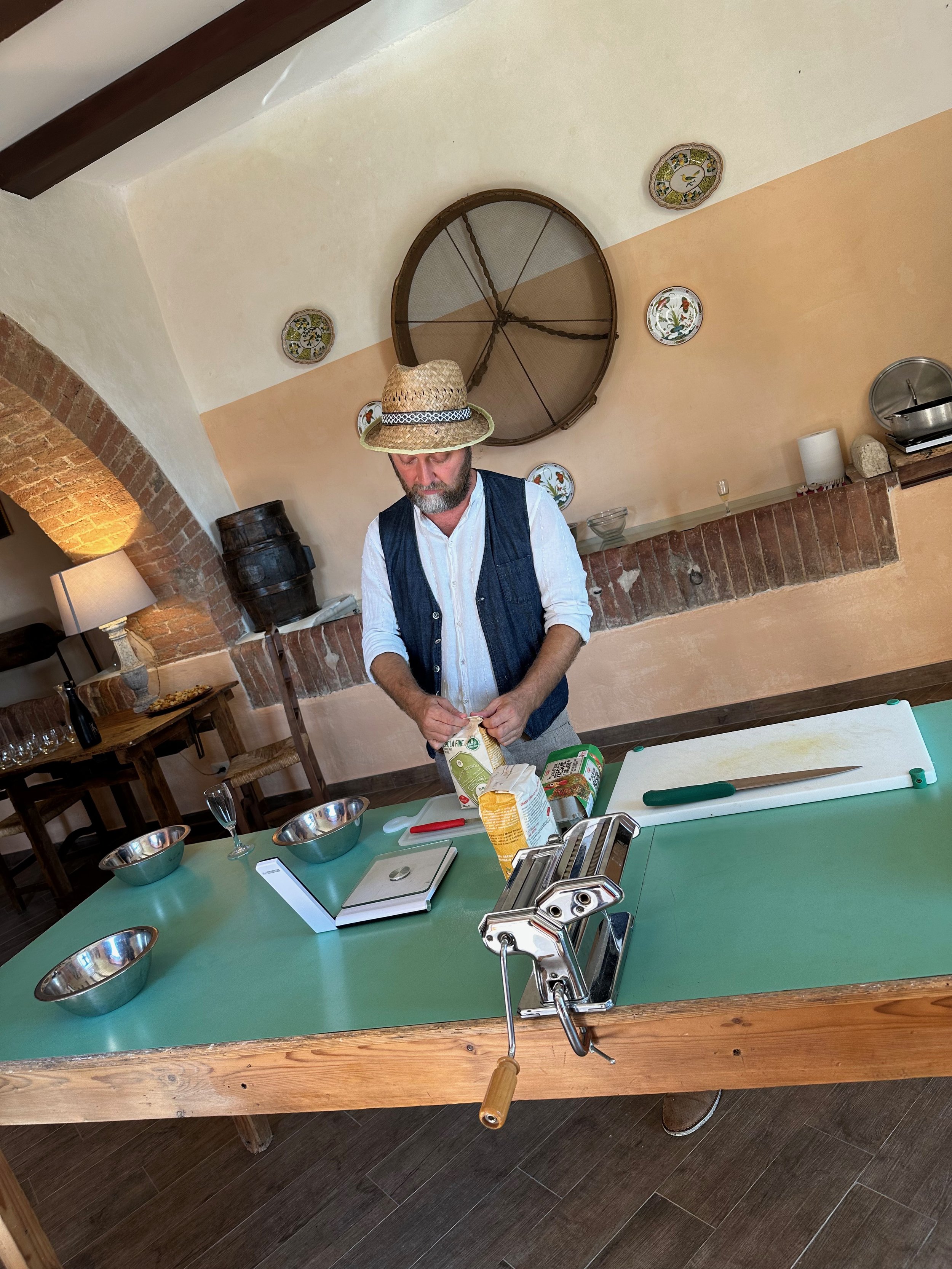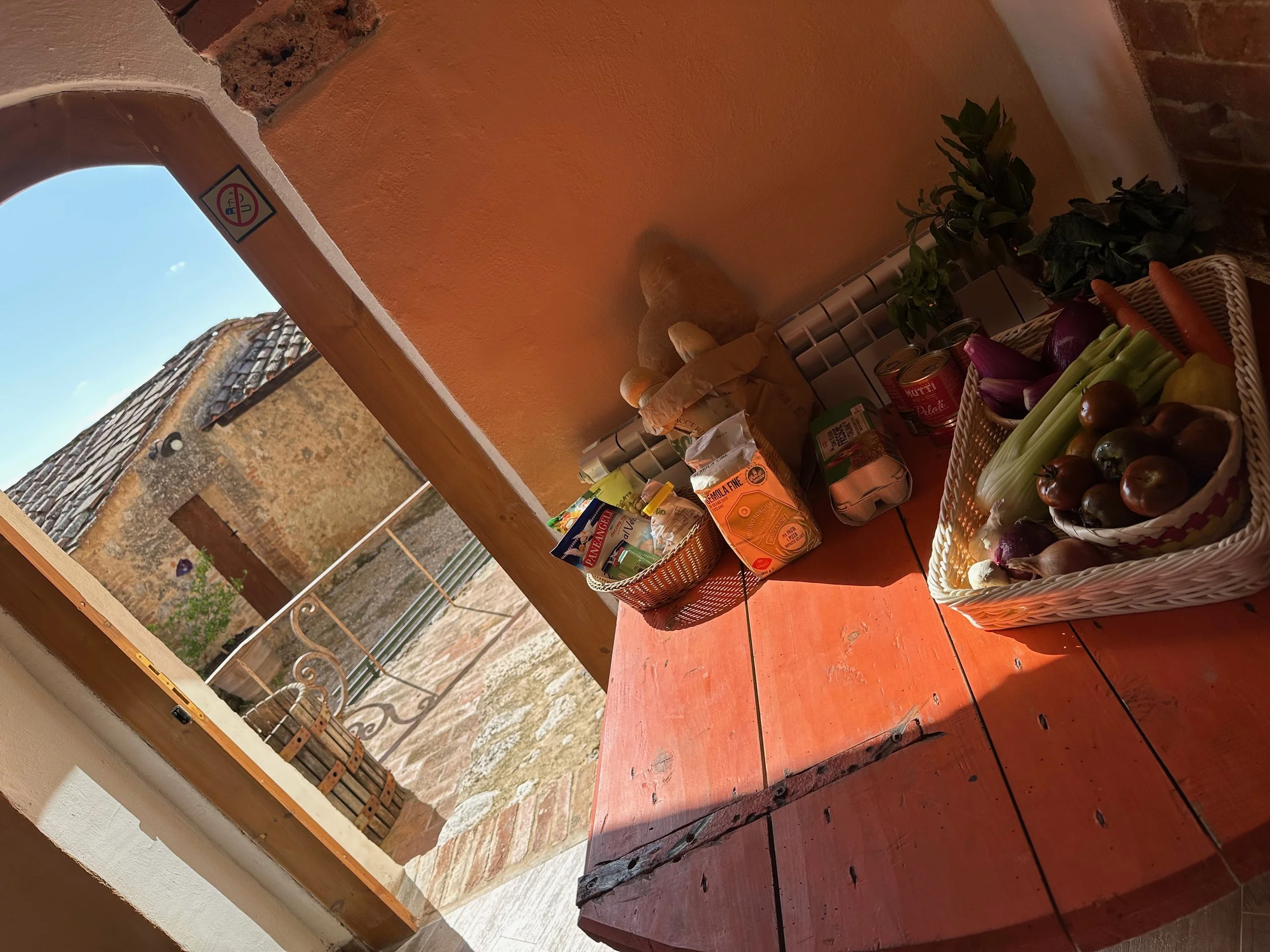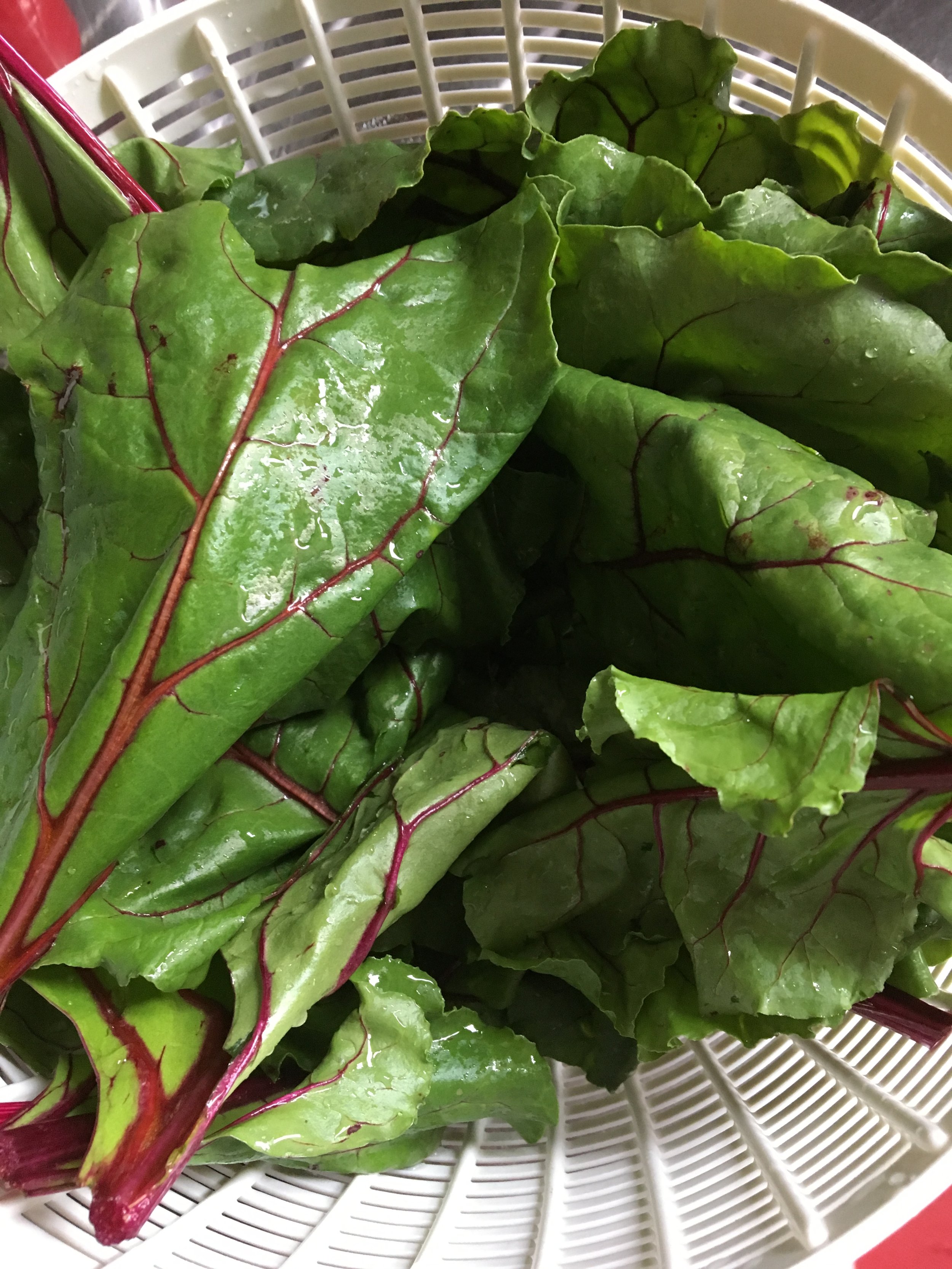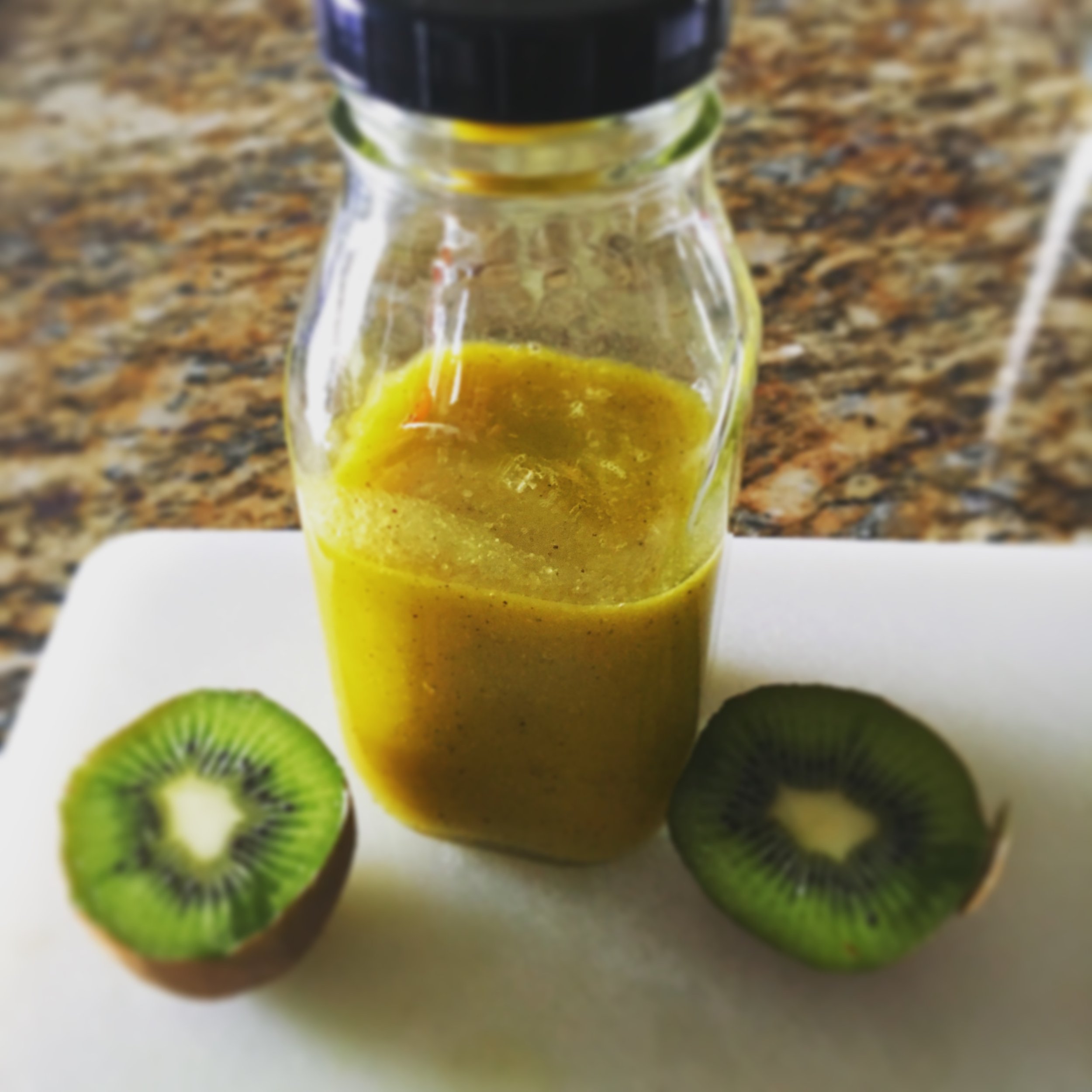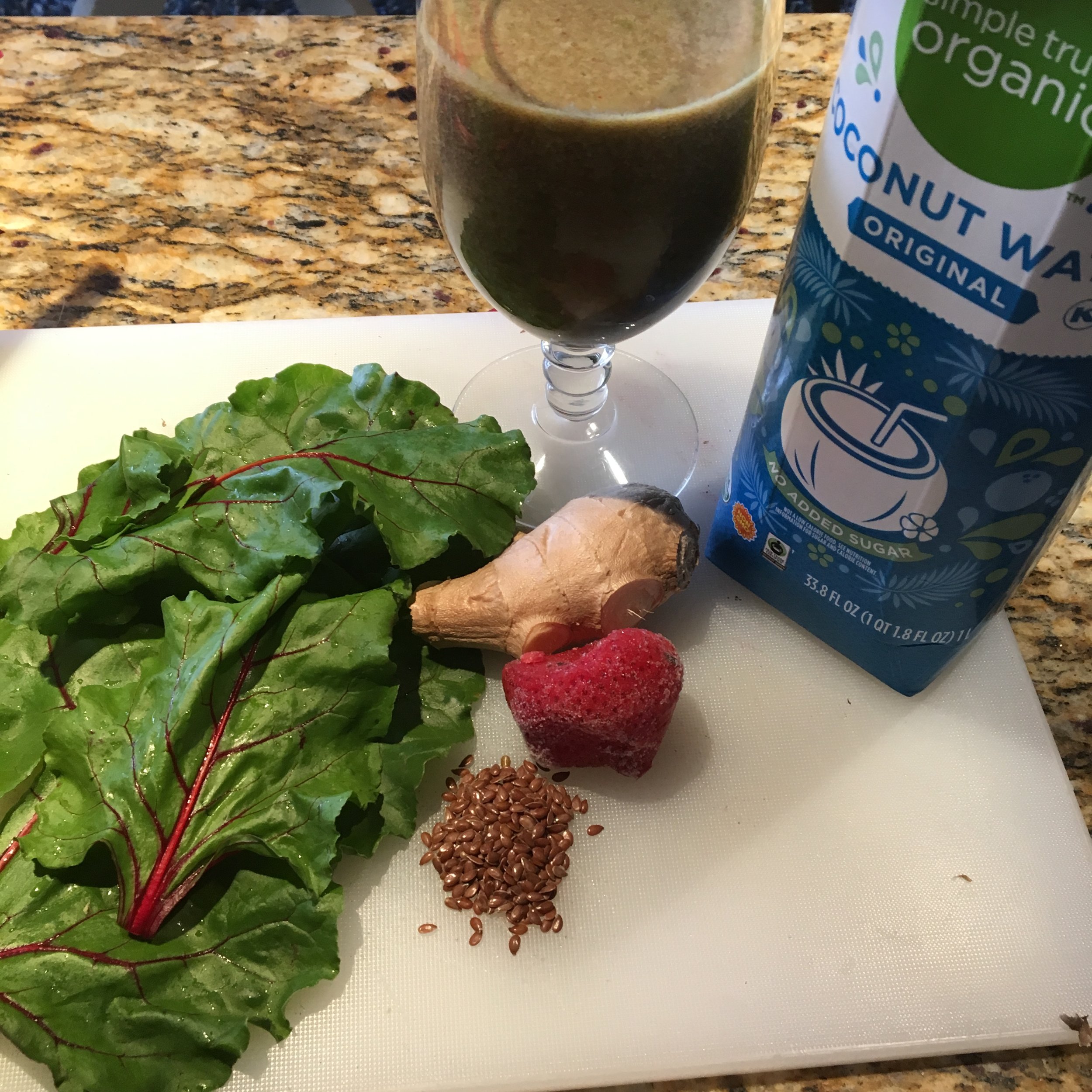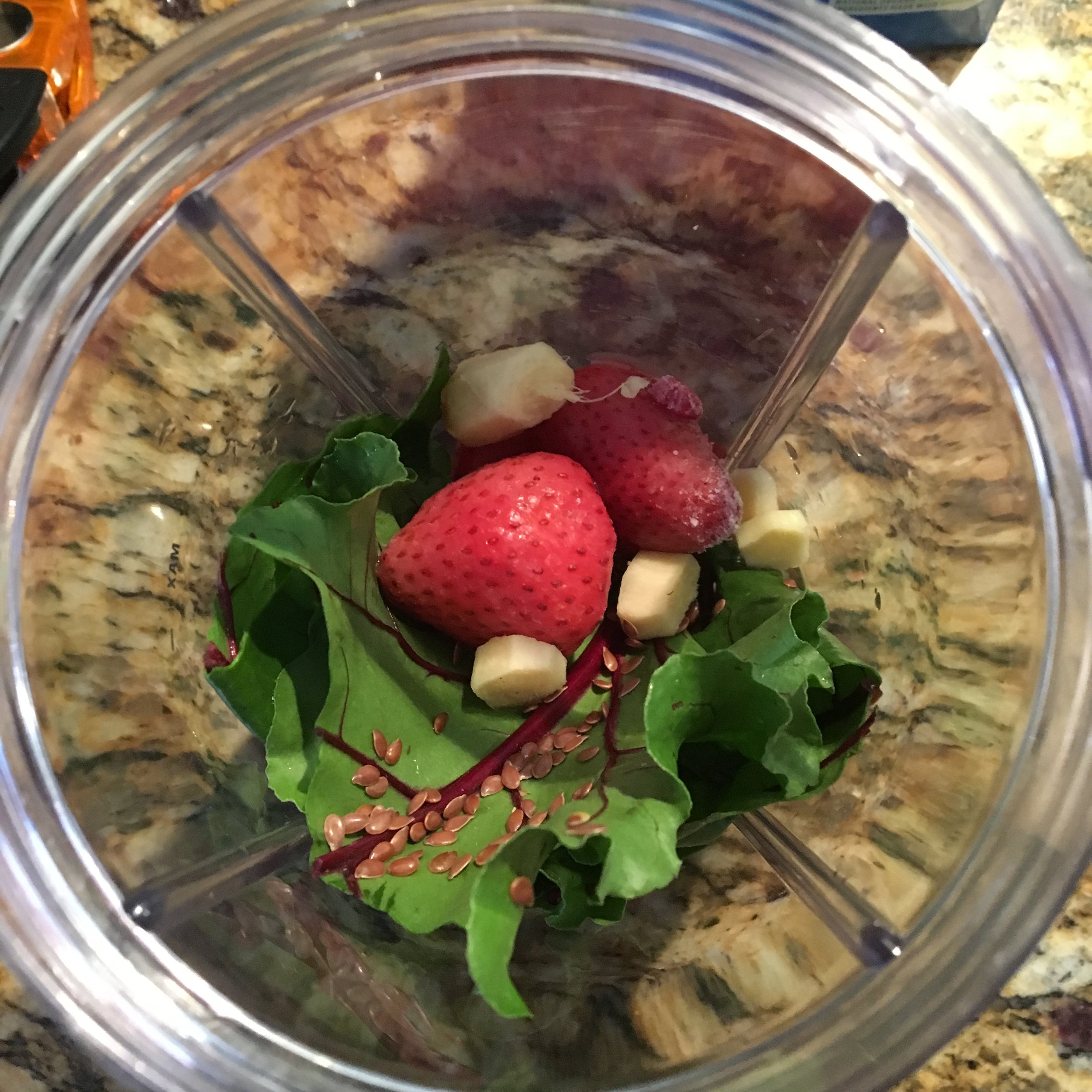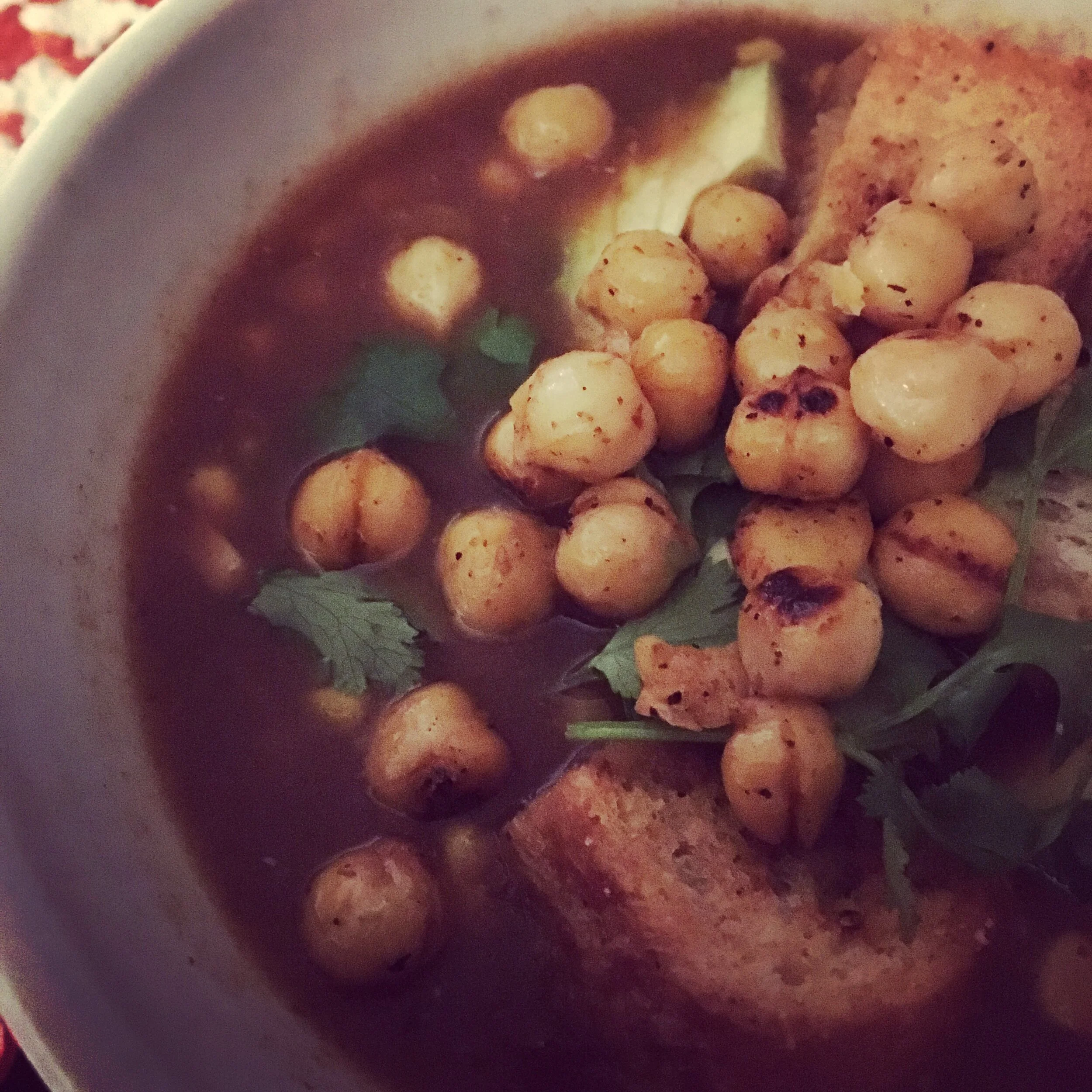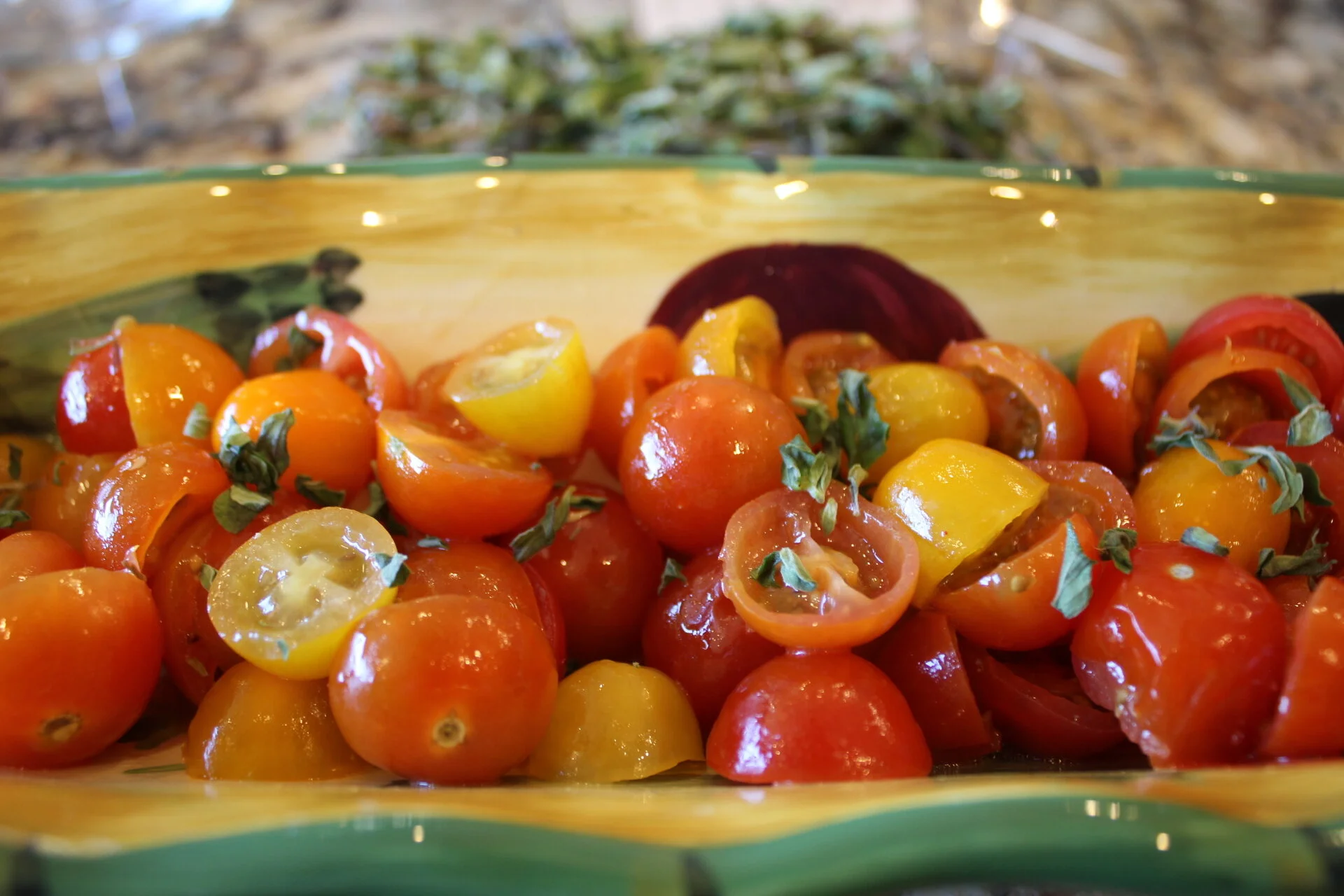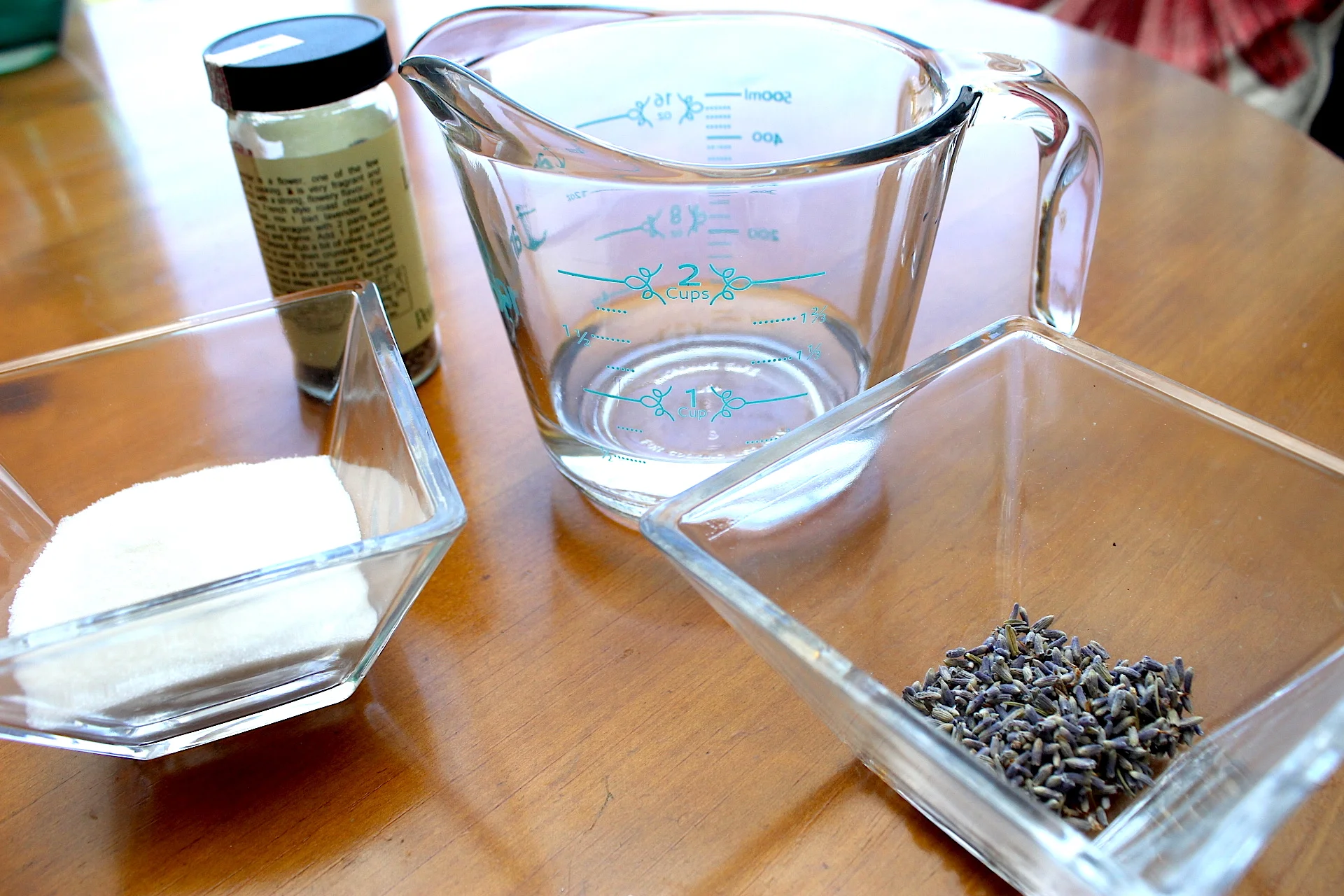Here is an authentic Tuscan Ragu Recipe from Tuscany
Tuscan Ragu Recipe Made Light
I’ve been making spaghetti sauce for years but on this past trip to Italy, I learned how to make Ragu. As the instructor said, there is no such thing as “spaghetti sauce” in Italy, (nor is there any such thing called “Alfredo Sauce.” (Well, how could I argue?)
I’ve always known travel to be something that is necessary not just to expand my understanding of different places but to learn new ideas, new techniques, and ways of how others do things differently.
I used to hold back and be mindful of what I ate when traveling, but I’ve learned to relish in the food just as anyone watching their health who lives overseas would do. Europeans are particularly mindful of health, but most importantly, they often focus on fresh ingredients.
For example, we were taught on this past trip to Tuscany in a cooking class that very large garlic bulbs are better at digesting your food. A shot of a liqueur after dinner is also something taken for digestion.
“After dinner in Rome, we were offered a drink with similar qualities of a Jägermeister-type drink with fruits, licorice, anise, and similar spices. It was not something offered to keep the party going or a dessert choice but rather for digestion. In Rome, we were offered this free drink after dinner as a hospitable gesture to help with the digestion of our rich red sauces over our plates of pasta. Made sense and it was appreciated. When in Rome…
When in Santorini or in Southern Italy, it’s typically limoncello. ”

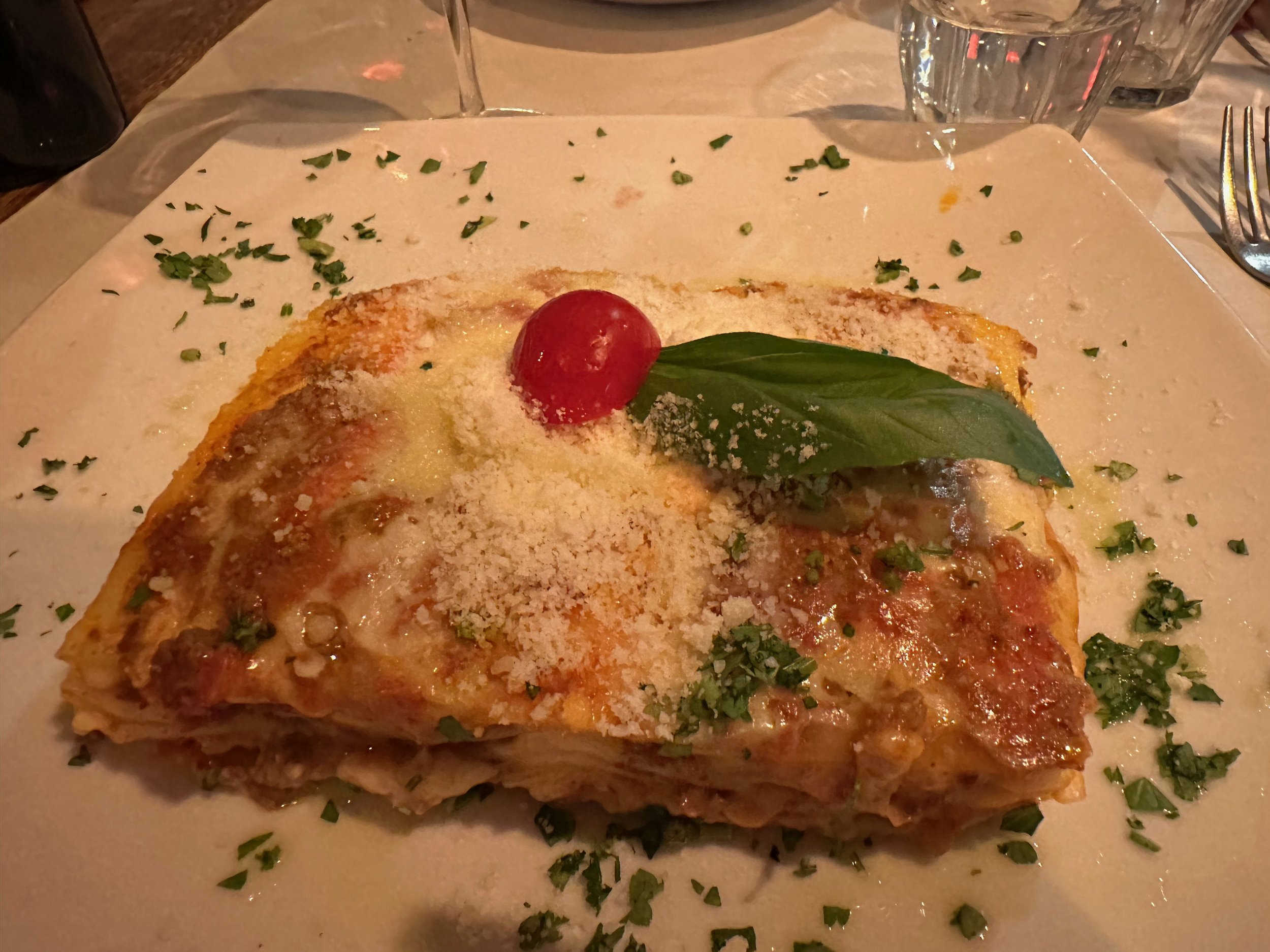
We were tourists and were pampered by the locals as they shared their cooking secrets, tips, and warm hospitality.
A Tuscan Ragu over Tagliatelle noodles was prepared with different bruschettas for appetizers, and homemade cookies were prepared using Mauro’s grandmother’s handed-down recipe. We had this lunch as we sipped various wines and were taught how to pair them in Tuscany.
It was amazing.
Our Instructor Mauro
Here is the recipe.
Ingredients:
2 medium-sized carrots diced
1 celery stick cut into small pieces
½ medium size onion diced
Half of firm tofu diced or chopped
2 sausages taken out of the casings and cut into small pieces
Fresh herbs - 2 twigs of rosemary; plucked off the stem and finely chopped
5 twigs of thyme with leaves shaved off the stem,
One half a bush of basil; leaves on top of each other, rolled, sliced, and then chopped
2 fresh bay leaves (dry ok)
1/2 Tbsp of fennel seeds
1-2 garlic cloves minced
½ Tblsp of red chili flakes
Big 28 oz can of whole peeled tomatoes (preferably from Italy, like Cento or Mutti)
⅓ bottle of good red wine, preferably one that is dry (unless you're trying to make a sweeter ragu, then I imagine you’d choose a more fruity wine.)
½ cup of olive oil
1 Tsp of Salt
1 Tsp of Pepper
Instructions:
Left chopped veggies, the right are chopped more.
After chopping the onion, celery, and carrots, chop them again, preferably with a half-moon “mezzaluna” chopper. I just used a big knife to chop the vegetables into tiny size chunks.
Heat a Dutch oven or very large saucepan to medium-high. Once it gets very hot, put vegetables in the pot with about ⅓ cup of olive oil, salt, and pepper and brown for about 3 to 4 minutes until they get a little fragrant.
After the vegetables have cooked for 3-4 minutes, add the garlic and stir a bit to soften the garlic. Add the sausages, tofu, fresh herbs, chili flakes, and fennel seeds. Saute until the sausage looks cooked and begins to brown at the bottom of the pan. Add a little more olive oil if needed, add the bay leaves, stir a little more, and then add the wine. Change it to low heat. The bottom of the pan will deglaze and begin to simmer. Keep simmering until it no longer smells of alcohol; about another 4-5 minutes like below.
Once cooked, add the whole peeled tomatoes and chop in the pot using a wooden spoon with the rest of the meat sauce. Once mixed well, simmer on low for about 20 minutes. (Here is when you may be tempted to add tomato paste or sauce, but don’t unless it’s from Italy. If you do, add very little. This is not spaghetti sauce, remember?)
When the sauce is boiling at a simmer, turn off the oven and let it rest for at least a good hour if possible. Taste it, and if it’s still a little bland, just add a little salt to bring out the flavors more.
The Italian can of whole peeled tomatoes were so red, I’ll omit the tomato sauce next time.
When you’re ready to make the pasta, remember the water only needs a good portion of salt, not oil. However, sprinkling oil over them after draining is a good way to help them not become sticky and separate nicely using a pasta ladle. Mauro confirmed that.
Once the noodles are done, pour the sauce over your noodles in a big Tuscan bowl. Ragu goes great with not only spaghetti but fettucini, spaghettoni, tagliatelle, etc. Blend your choice of pasta using 2 spoons and serve right at the table.
“Serving right at the table, whether its a table for two or more, is a way for your dish to shine and be the star of the show, but most importantly, it’s practicing great hospitality. ”
Serve on plates with fresh parmesan and remember always to use fresh ingredients when possible.
Enjoy!
Pan-Fried Duck Recipe And What To Pair It With
We Need To Avoid Non-Stick Pans
7 Pantry Foods We No Longer Buy
Roasted Parsnips
Latest Recipe Discovery:
I usually just make these on their own but I would imagine if you included carrots, this would be a delightful dish. It's definitely husband-approved!
2 lbs of parsnips
Half a bunch of parsley
2 cloves of garlic
Half a stick of butter
Salt and pepper
Chili pepper flakes
Preheat oven to 400
Take out a baking sheet and cover it with aluminum foil making sure it has a lip on all sides to catch any butter drippings.
Cut parsnips by trimming the ends and cutting right down the middle in fours to form french fries. Just clean them thoroughly too, don’t peel them.
Finely mince the garlic
Add to a small bowl with the butter and microwave for about 10 seconds
Brush the parsnips with garlic butter
Sprinkle with salt and pepper
Put in the oven for about 35-40 minutes turning them halfway through.
Remove all leaves from the parsley and finely chop.
Take out the parsnips and sprinkle them with chili flakes and minced parsley.
Serve cold or warm.
Chef’s suggestion: If you steam them first in salt water beforehand, they will carmelize and not get too shriveled up during roasting.
Sure, you can roast potatoes but parsnips are rich in potassium, fiber, and vitamin C.
And let’s not forget! These would pair well with a glass of white wine.
Cheers!
Thanksgiving Stuffing Recipe
The Perfect Smoothie
It’s that time. You know the holidays are coming and the idea of dieting right now becomes meaningless so you push it until the beginning of the year.
Why not learn the different ways of making smoothies? I’ve been told that smoothies have too much sugar and typically they do. However, I’ve learned a lot about making the perfect smoothie over the years and it’s what I really enjoyed even in direct selling for a nutritional shake company. (Who hasn’t done that?)
If you don’t have one of those expensive and clunky juicers which can maximize your efforts and provide the best detox, here is an alternative way to make smoothies. You can now use that blender you got as a gift and never use. (Your welcome.)
Smoothies are still the best alternative to a meal when you’re trying to hold down the weight, eat healthy, and are on the go.
What I’ve learned is that if I just have all these ingredients, I can get super creative. All you need are just these 5-type of ingredients for the perfect smoothie.
Here are 5 Ingredients to make the perfect smoothie.
See this in the store? Get it! The red veins have a ton of nutrients and can be used as your herb.
Veggie: Leafy vegetables like spinach or kale
This is what you want to stock up on in your smoothie. This is the protein, the snack inhibitor; the healthy reason why you’re making a shake in the first place. Don’t like the idea of a “green” shake? Get over it. Leafy vegetables typically don’t taste like anything. (Ok except the Sorrel pictured above.)
Herb: ginger, lemon, or lime
This is the sugar replacement. Instead of sugars, use something that is strong enough with health benefits such as ginger which will improve the taste of your smoothie and completely distract you from having a leafy green vegetable in it. You can also use Sorrel which can be as sweet as rhubarb and as bitter as lemon.
Binder: banana, avocado, cashews: anything that helps to make it "smooth" (like yogurt)
Over the years, I’ve looked for recipes that don’t include yogurt just because it’s not plant-based. Sometimes I’ll use it but I’ve gotten so used to not using it that I often forget that yogurt can be used as a binder. My favorite is cashews because of the slight taste it gives and how it blends so well. Bananas are great frozen and are easy to break apart. Just make sure you peel them first before freezing them for easier use. Avocado is great with bananas, PB milk, ice, and cocoa powder and sometimes comes out like pudding. Yum! (Add more PB milk to make it less dense of course.)
Liquid: Plant-based milk, coconut water, or just water
I used to think that depending on what kind of ingredients you use, you would use water or PB milk. However, I can use any kind of plant-based milk with many combinations. Unless it’s a really hot day and you wish to have something that is water-based such as cucumbers, kale, lemon, and water, then any PB milk will do in place of just plain water is acually great. Sometimes I’ll pick up coconut water for that extra hydration.
Sweetness: a little of your favorite fruit
Ok - here’s where you don’t get carried away unless you’re still trying to change your taste buds: I hear ya. If you’ve added all the above ingredient types you won’t need that much fruit: sugar. Maybe you’ll need to add more fruit in the beginning if you’re used to having a smoothie with a lot of fruit but the herbs, the liquids and the binders (except the avocado) can help accentuate the flavors in place of the fruit.
Chances are, if you have all these 5 types of ingredients, you'll have a delicious smoothie. Just remember what you’re mixing. Lemons don’t go with cherries and oranges don’t go with limes. You’ll get the hang of it.
And don’t forget to add extra boosts like flax seeds, powders, chia seeds, or cocoa powder which is great to reduce inflammation, improving the heart, and so much more. (Oh, you didn’t know that?)
Ok, on occasion, I’ll add a dash of pudding mix, instant hot chocolate mix, or other sweet ingredients because I’m in the mood to treat myself. (Sure beats straight-up ice cream or pie.) If you’re just starting to learn how to make smoothies to work on your health, try a little yogurt with fruit, ice, and plant-based milk but with the expectation that you’ll experiment with more types of ingredients.
The older we get, the more challenging it can be to reduce every single ounce of calories, and learning how to shake up a meal, opens a ton of ideas. In my book, 26-Days; A Whole Food Plant-Based Diet and What You Need to Know, one of my challenges in changing my diet was finding ideas.
As found on Amazon…
I have those old-fashioned mixers to make shakes. Funny how I often forget to make milkshakes because of the calories but breakfast shakes? All day long.
What is your favorite shake recipe?





